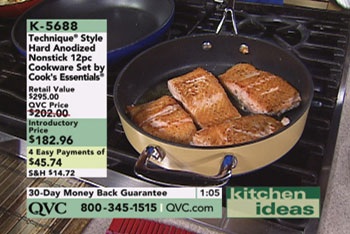Can QVC Succeed with Instant TV Ordering Where Everyone Else has Failed?
There’s news out this week the QVC is going to seek one of the tech world’s holy grails of TV advertising: easy ordering directly through your TV. Isn’t it tremendous that the technology is finally ready for this great step forward?
Not really. Since the early 1990′s, system after system has been tried with the grand promise that easy ordering from TV will deliver outstanding results. And, it’s failed every time.
Instant TV ordering hasn’t failed due to technology problems. It’s failed because consumers really don’t care. Let’s look at the consumer equation…
Many consumers like to pick up the phone to talk to a live operator and place an order. It’s a pretty simple low cost operation. Even better, the consumer gets a value from the phone call. Their order is taken in a low risk situation by a live operator. They can ask one or two questions to be certain they know the price, control shipping options, seek guarantee details, etc…
Other consumers prefer to go online to seek the same information, review what other people say about the product, possibly chat with an operator via the computer, and then order when they’re comfortable.
In other words: Today’s system is low pain and low risk while delivering important consumer value.
That hasn’t been true of instant ordering. Instant ordering eliminates the important information possible through other mediums and increases the potential of making an error that can’t be corrected except by refusing the order when UPS arrives.
And that’s why past tests have failed: there was no consumer problem to be solved AND instant ordering increased perceived risk.
Note carefully: these are consumer problems, not technology problems!!!!
There is a chance QVC’s effort might work. And that opportunity comes from two advantages.
1. The cost of implementing this is relatively low given digital cable progress. So, there’s no added cost to the consumer and QVC doesn’t need stellar results for it to work and pay-per-view has habituated consumers to ordering content instantly on the TV.
2. QVC has a dedicated repeat purchasing audience of around 3% to 5% of the population. Like Amazon’s one click ordering, they have higher trust meaning that consumers might perceive less risk than they have in past tests.
Who knows what will happen. Based on past experience, I would have put the chances for success below 20% (that’s more than double what I’d give other instant TV ordering efforts).
Then, I read QVC’s announcement. The announcement focuses how great it will be to reduce telemarketing costs. That’s a bad start for delivering value to consumers and now I’m tempted to lower my estimate of success. (And I’m definitely not naive enough to believe QVC’s going to use those reduced costs to drop prices.)
QVC needs to learn quick: this must be a consumer effort. It will only work by delivering value to their consumers. QVC and Ensequence need only take a brief tour around the junkyard of failed TV technology to see that just because a company wants a technology to work doesn’t mean it will.
Copyright 2010 – Doug Garnett
Categories: Big Data and Technology, Brand Advertising, Communication, convergence, Direct Response, DR Television, Human Tech, internet convergence, Marketing Research, Retail marketing, Technology Advertising, technology marketing, tv convergence


Posted: July 30, 2010 02:48
Budd Margolis
Posted: July 30, 2010 06:29
Doug Garnett
Posted: July 31, 2010 02:51
Budd Margolis
Posted: August 29, 2010 01:39
Steven Conder
Posted: August 29, 2010 22:38
Doug Garnett
Posted: September 6, 2010 11:39
Doug Garnett
Posted: September 14, 2010 20:28
international merchant account
Posted: September 15, 2010 02:12
New Gadgets
Posted: September 27, 2010 14:55
Mark Dropinski
Posted: October 15, 2010 12:31
Rolland Parrin